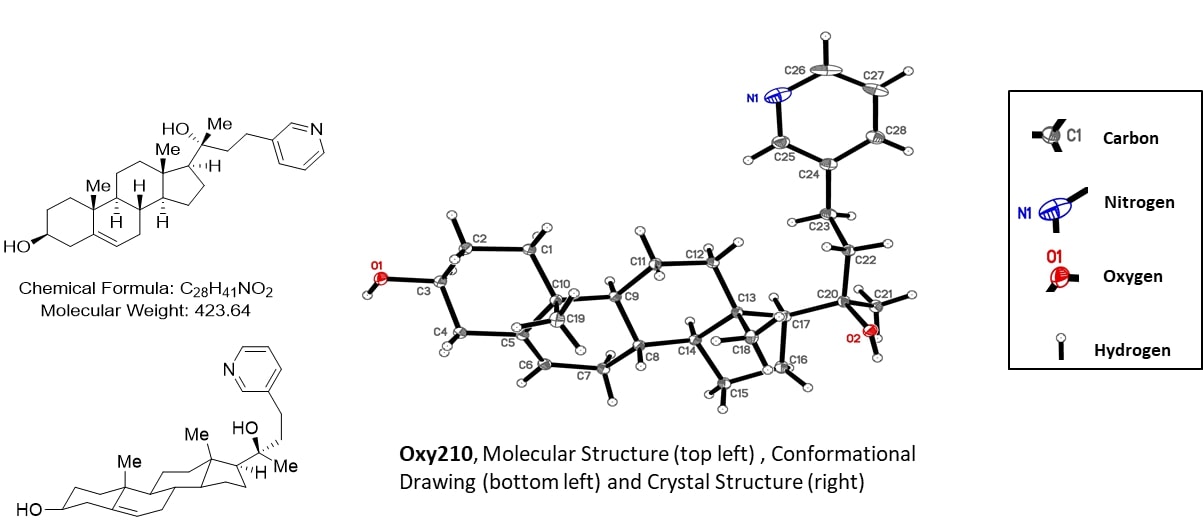Oxy210
Drug Candidate
Oxy210 is a small molecule with a molecular weight of 423.64 g/mol.
Preclinical Pharmacology
Oxy210 is a semi-synthetic oxysterol displaying a unique combination of antifibrotic and anti-inflammatory properties. Oxy210 is derived from a naturally occurring oxysterol, 20α,22(R)-dihydroxy-cholesterol (Oxy16), a known metabolite of cholesterol in the biosynthesis of steroid hormones, which is also a weak antagonist of Hedgehog signaling. Oxy210 can be prepared in a three-step chemical synthesis, using naturally occurring pregnenolone as a starting material.
Mechanism of Action
The antifibrotic activity of Oxy210 is mediated by inhibition of two pro-fibrotic signaling pathways, namely Hedgehog and TGF-β signaling. In addition, Oxy210 possesses anti-inflammatory activity in part through inhibition of Toll-Like Receptor 2 (TLR2) and TLR4, independent of cyclooxygenase 1 (COX-1), COX-2 or steroid receptor inhibition.
Safety
Oxy210 is well tolerated in mice with acute and chronic dosing. In one recent study, Oxy210, mixed into mouse chow at a loading of 4 mg/gram of food, was well tolerated in mice for 16 weeks of chronic dosing. This corresponds to a dose of about 260 mg/kg/day (based on food consumption). Oxy210 administered at high doses to pregnant mice did not cause harm to embryonic development and hence is non-teratogenic. Oxy210 did not inhibit hERG ion channel function, hence deemed safe to cardiac system, and tested negative in the Ames mutagenicity assay, suggesting lack of genetic toxic effects.
Efficacy
Using a disease relevant “humanized” NASH mouse model, Oxy210 was shown to effectively ameliorate hepatic fibrosis, inflammation and improve hypercholesterolemia. Oral administration of Oxy210 results in inhibition of hepatic inflammatory and fibrotic gene expression, reduced lipid deposition and apoptosis, improved hepatic function, reduced hepatic fibrosis associated with significant inhibition of other NASH hallmarks. The anti-fibrotic and anti-inflammatory effects of Oxy210 are at least in part mediated through inhibition of three known drivers of NASH: Hedgehog signaling, TGF-β signaling and Toll-like receptor signaling.

